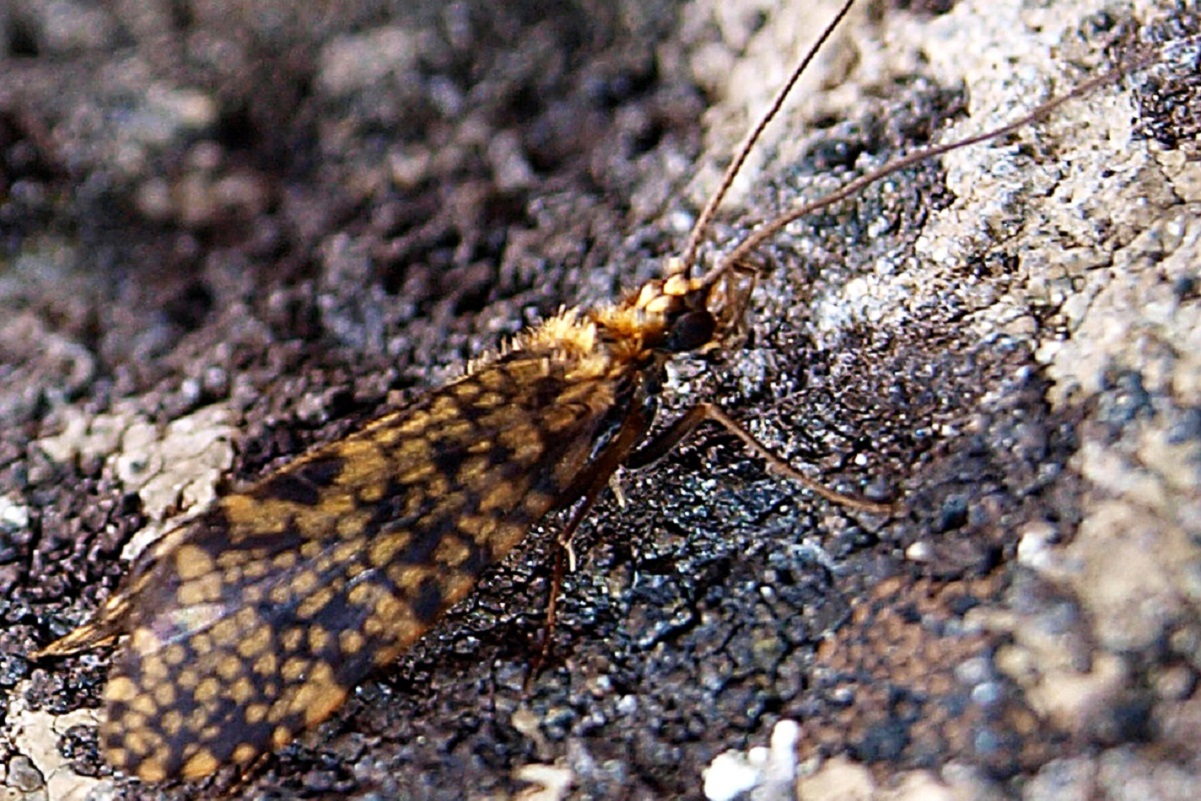St Petersburg University entomologists have discovered new types of ‘sniffing’ receptors in ancient relatives of butterflies

Researchers from St Petersburg University have counted the number of microscopic olfactory organs – sensilla – located on antennae of caddisflies. Additionally, the entomologists have found a previously unknown type of antennal sensilla in caddisflies – pseudoplacoid. It may happen to be the type of sensilla that enables caddisflies to locate the nearest water body. The findings of the study were published in the latest issue of the journal Entomological Review, dedicated to the 100th anniversary of the Department of Entomology at St Petersburg University.
Caddisflies are well known to anglers as they can be found in virtually any part of the world from Wrangel Island in the Arctic Ocean to the outskirts of the Sahara Desert in Africa. Caddisflies are small, dull-coloured, moth-like insects, which is not surprising, since they have a common ancestor with butterflies. The University entomologists took a keen interest in studying caddisflies because of their complex communication system using three types of signals: smells, sounds and body postures.
‘This is a much more complex language than we can imagine,’ revealed Vladimir Ivanov. He is a co-author of the research paper, Head of the Department of Entomology at St Petersburg University, and Candidate of Biology. ‘It is more than just signals. Caddisflies use complete chemical statements, as it were. Consequently, attempts to attract them with simple chemical compounds fail.’
To investigate in detail how caddisflies communicate, St Petersburg University entomologists counted the number of antennal sensilla of four species of the family Ecnomidae for the first time. They were able to carry out such a thorough and laborious task using the cutting-edge equipment of the ‘Resource Centre for Molecular and Cell Technologies’ of the Research Park of St Petersburg University. The research findings revealed that, unlike other insects, caddisflies have more sensilla at the antenna base than at its apex. The latter is used to receive chemical signals from as great a distance as possible. According to Vladimir Ivanov, this is one of the scientific mysteries that have yet to be solved.
‘Besides, we have discovered a new type of sensilla in caddisflies – pseudoplacoid,’ added the entomologist. ‘It has a mushroom-like shape with a “leg” and a “hat.” One may say, the surface of caddisfly antennae somewhat resembles a “forest”: long trichoid sensilla look like tree trunks without branches, with “moss” growing at their base – these are microtrichia, thin cuticular protrusions. And in the “moss,” peeping out from beneath, mushroom-like pseudoplacoid sensilla sit. Hypothetically, they provide the caddisflies with information about the environment, for instance, about the location of the water body. However, this is yet to be ascertained.’
The next step for the researchers is – together with physiologists from the I. M. Sechenov Institute of Evolutionary Physiology and Biochemistry – to figure out how these microscopic ‘sniffers’ function. Besides, they will have to clarify why caddisflies need these sensory receptors. Vladimir Ivanov emphasises the importance of research in this area. It not only gives us the opportunity to gain knowledge about the connections between the olfactory organs and various structures of the insect brain, but it will also come in handy in agriculture (for repelling pests) and in ecology (for biological monitoring).
‘Caddisflies are useful bioindicators of environmental pollution. Their aquatic larvae are particularly sensitive to water pollution,’ explained Vladimir Ivanov. ‘Since the caddisfly fauna is very pollution sensitive, some species can be utilised to screen aquatic ecosystems for toxic emissions. In some cases, pollutants in the water samples cannot always be detected, because it may have been a “one-off” emission. However, the absence of some species of caddisfly indicates that the concentration of pollutants was high enough to cause mass death of the insects. Thus, the bioindication methods are particularly suitable for complementing chemical analysis methods.’
The Department of Entomology at St Petersburg University is the oldest in Russia and one of the first specialised entomology departments in the world. This year, the department celebrates its centenary. It was founded in 1919 by an entomologist Mikhail Nikolaevich Rimsky-Korsakov, the son of a famous Russian composer. Today, the Department carries out scientific research not only in classical entomology, but also in new research areas, such as: evolution of biological diversity; speciation mechanisms; evolutionary ecology; sociobiology; immunology; and biopharmacology. The department includes two laboratories: the Laboratory of Physiological and Evolutionary Ecology of Insects, and the Laboratory of Immunology and Biopharmacology of Insects.
In the latest issue of Entomological Review, dedicated to the 100th anniversary of the Department of Entomology, you can read about its history. There are also research publications reporting the results of most recent studies by St Petersburg University entomologists. For instance, you can learn how Calliphoridae flies are employed in medical biotechnology, or how scientists study cryptic species. These are ‘twin’ species that are practically identical in appearance, but belong to different species.

